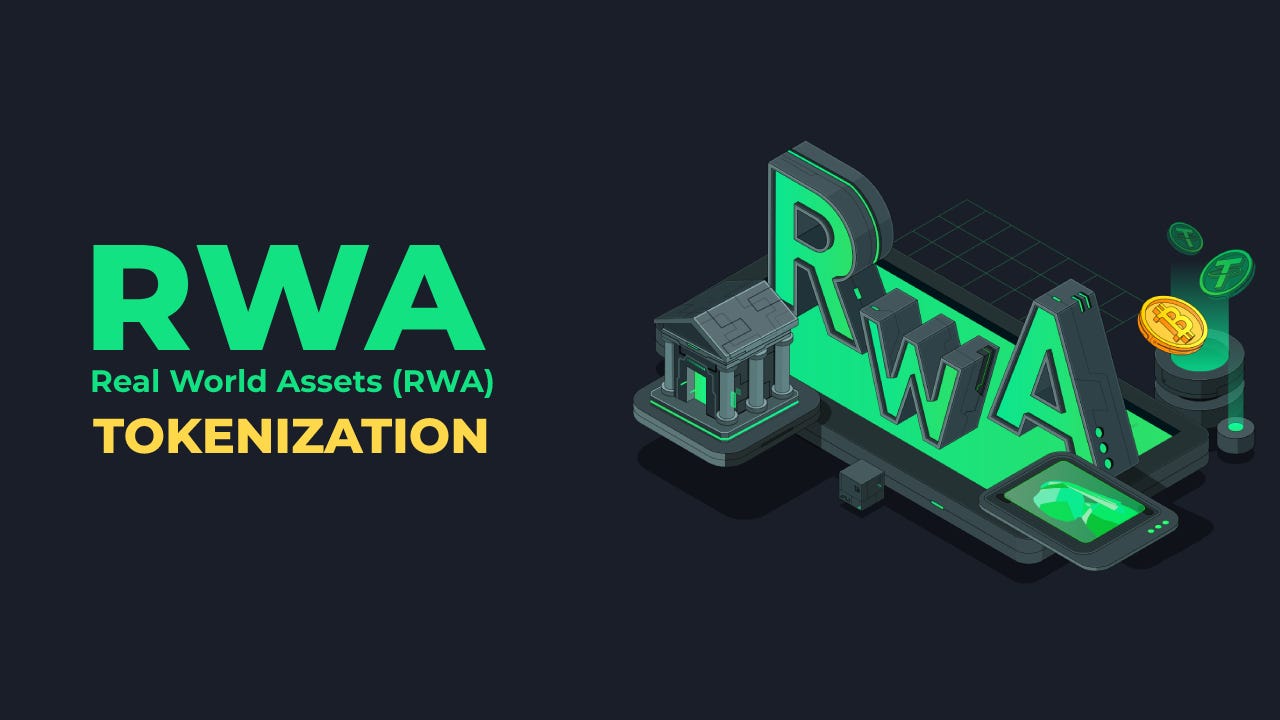How Can Real World Asset Tokenization Shape the Future of Wealth Management?
 Albert Peter
Albert Peter
In recent years, the concept of tokenization has gained significant traction, particularly in the realm of finance and investment. Tokenization refers to the process of converting ownership rights of a real-world asset into a digital token on a blockchain. This innovative approach has profound implications for wealth management, promising enhanced efficiency, transparency, and accessibility. In this blog, we will explore how real-world asset tokenization can shape the future of wealth management, highlighting its benefits, challenges, and potential impact on investors and financial institutions alike.
Understanding Real World Asset Tokenization
Real-world assets (RWAs) encompass a wide range of tangible and intangible assets, including real estate, commodities, artworks, and even financial instruments. Tokenization involves creating a digital representation of these assets on a blockchain, allowing for fractional ownership and easy transferability. For instance, a $1 million piece of real estate can be tokenized into 1,000 tokens, each representing a $1,000 share of ownership. This method democratizes investment opportunities, making it possible for smaller investors to participate in markets previously dominated by high-net-worth individuals.
The Benefits of Asset Tokenization in Wealth Management
1. Increased Liquidity
One of the most significant advantages of tokenization is the enhanced liquidity it offers. Traditionally, RWAs like real estate or fine art are illiquid, often requiring substantial time and resources to sell. Tokenization allows for the fractionalization of these assets, making it easier for investors to buy and sell portions of their holdings. This increased liquidity can attract more investors to the market, providing a more dynamic investment landscape.
2. Lower Barriers to Entry
Tokenization lowers the barriers to entry for investors. With fractional ownership, individuals can invest in high-value assets without the need for significant capital. This inclusivity promotes broader participation in wealth management, allowing more people to diversify their portfolios with alternative investments.
3. Enhanced Transparency and Security
Blockchain technology, which underpins tokenization, offers inherent security and transparency. Each transaction is recorded on a decentralized ledger, providing an immutable and publicly accessible record of ownership. This transparency can help reduce fraud and enhance trust in the asset management process, particularly for investors who may have concerns about the integrity of traditional financial systems.
4. Efficient Processes and Lower Costs
Tokenization can streamline various processes involved in wealth management, such as due diligence, compliance, and reporting. Smart contracts—self-executing contracts with the terms of the agreement directly written into code—can automate many of these processes, reducing the need for intermediaries and minimizing operational costs. This efficiency can lead to cost savings for both investors and asset managers.
5. Access to a Global Market
Tokenized assets can be easily traded on various platforms, enabling access to a global pool of investors. This international reach allows asset managers to tap into new markets and expand their client base, enhancing the potential for growth and diversification.
Challenges of Asset Tokenization
While the benefits of real-world asset tokenization are compelling, several challenges must be addressed to fully realize its potential in wealth management.
1. Regulatory Uncertainty
The regulatory landscape surrounding tokenization is still evolving. Different jurisdictions have varying approaches to the classification and treatment of tokenized assets, which can create confusion and hinder adoption. Asset managers must navigate this complex regulatory environment to ensure compliance and protect their investors.
2. Technology Integration
Integrating blockchain technology into existing financial systems can be a daunting task. Many financial institutions may lack the necessary infrastructure, expertise, or willingness to embrace this new technology. Overcoming these technological barriers will be crucial for widespread adoption.
3. Market Education
As tokenization is a relatively new concept, there is a need for education and awareness among both investors and financial professionals. Many potential investors may be unfamiliar with the risks and benefits associated with tokenized assets, necessitating efforts to promote understanding and confidence in this new investment paradigm.
4. Valuation Challenges
Determining the value of tokenized assets can be complex, particularly for unique or illiquid assets. Traditional valuation methods may not always apply, and the lack of established market benchmarks can complicate the pricing process. Asset managers must develop innovative approaches to asset valuation to address this challenge.
The Future of Wealth Management
The integration of real-world asset tokenization into wealth management has the potential to transform the industry significantly. As the technology matures and regulatory frameworks are established, we can expect to see several key trends emerge.
1. Emergence of Tokenized Funds
We are likely to see the creation of tokenized funds that pool investors' resources to acquire and manage a diversified portfolio of tokenized assets. These funds could offer lower fees, enhanced liquidity, and greater transparency compared to traditional mutual funds or hedge funds.
2. Greater Personalization of Investment Strategies
With access to a broader range of tokenized assets, wealth managers will be able to create more personalized investment strategies tailored to individual clients' risk profiles and financial goals. This customization can enhance client satisfaction and retention.
3. Integration of AI and Data Analytics
As tokenized assets generate vast amounts of data, the integration of artificial intelligence (AI) and data analytics into wealth management will become increasingly important. These technologies can provide insights into market trends, investor behavior, and asset performance, enabling more informed decision-making.
4. Collaboration Between Traditional and Digital Finance
The future of wealth management will likely involve collaboration between traditional financial institutions and emerging blockchain-based platforms. Hybrid models that combine the best of both worlds can provide investors with diverse options and a seamless experience.
Conclusion
Real-world asset tokenization represents a significant evolution in wealth management, offering numerous benefits, including increased liquidity, lower barriers to entry, enhanced transparency, and improved efficiency. However, challenges such as regulatory uncertainty and market education must be addressed to unlock its full potential. As the industry adapts to these changes, we can expect a more inclusive and dynamic wealth management landscape that empowers investors and transforms the way we think about asset ownership and investment. The future of wealth management is here, and it is tokenized.
Subscribe to my newsletter
Read articles from Albert Peter directly inside your inbox. Subscribe to the newsletter, and don't miss out.
Written by

Albert Peter
Albert Peter
A seasoned full stack developer with a passion for sharing his expertise in the world of web development.Through my insightful and informative blog, I provides valuable insights, tips, and tutorials for fellow developers looking to master the art of full stack development.